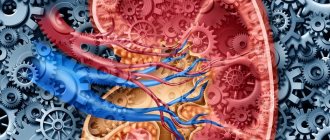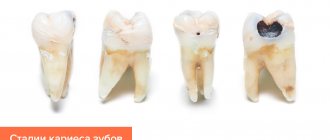Stress can be destructive to our health. The consequences of frequent experiences affect the functioning of all organs and systems.
For example, the skin may become dry and pale, with a yellow tint. The risk of cardiovascular disease also increases significantly. Cystitis, incontinence and much more can occur due to nervousness. And most importantly, stress accelerates the aging process - both external and internal.
Therefore, it is important for modern people to know the signs of stress in order to prevent its consequences or eliminate them as early as possible.
Signs of stress
According to statistics, in Russia women are more susceptible to stress due to their increased emotionality and sensitivity. In 2021, people of all professions experienced strong negative experiences, but especially teachers, entrepreneurs and, of course, doctors.
This year has been difficult for many, so the number of people with chronic stress has increased many times over. At the same time, people began to consider their depressed state as the norm. But even in the most difficult times, it is important not to let the situation get worse and fight back the disease.
Stress changes the entire body, so you should pay attention to different symptoms.
Behavioral signs of stress:
- conflict;
- aggressiveness;
- irritability;
- loss of interest in life, friends, appearance;
- decreased self-esteem;
- suspicion;
- frequent attacks of anger and feelings of helplessness.
Lifestyle changes:
- sleep disturbance;
- the emergence of bad habits;
- increased fatigue;
- decreased performance.
Intellectual traits:
- poor concentration;
- excessive distractibility;
- decrease in attention.
Changes in thinking:
- decreased creativity and memory;
- violation of logic;
- common spelling errors.
Physiological signs:
- frequent headaches;
- cardiopalmus;
- decreased immunity;
- sudden weight loss or, conversely, rapid weight gain;
- deterioration of organ function.
call me back
Classification of stress - types and subtypes
{banner_banstat1}
In terms of duration, stress can be:
- short-term;
- episodic;
- chronic.
Stress is divided into groups depending on the reasons that provoked its occurrence:
- unfulfilled hopes;
- excitement before competitions;
- lost time;
- changes in life;
- monotony of life;
- the emergence of passivity;
- the unattainability of perfection;
- sudden changes;
- satiety with benefits;
- achieving your goals.
Stress depends on many factors that determine the type of emotional stress. These are everyday conflicts, dissatisfaction with life, salary, position, fear of one’s uselessness to society, lack of time, constant change of time zones, hierarchy of relations between employees and management.
There are many reasons and they are divided into 3 groups:
- manageable stressors;
- stressors undergoing attenuation;
- constant stressors.
14 stages of stress development according to Torsunov:
Types of stress
Conventionally, two types of stress can be distinguished.
- Eustress is “good” stress that does not harm a person. Without it, we would always feel calm, at ease and would not want to achieve anything. We feel eustress when we need to get out of our comfort zone and change something in our life. A simple example: you have undertaken to create a large-scale project that requires a lot of time, effort, intellectual and physical expenditure. It’s difficult for you, you’re nervous, but at the same time you feel that in the end you’ll get a pleasant feeling of pride in yourself, you’ll be praised, and all your efforts will not be in vain. Thus, eustress motivates us not to give up and move forward despite difficulties.
- Distress is harmful and occurs when stress reaches a large scale: it lasts for a long time and has several foci of occurrence. For example, when a person has to cope with several difficult and unpleasant tasks at once: a change of environment, joining the army, lack of sleep, financial losses.
Distress has an extremely negative impact on the human psyche and physiology. He stops being happy, receiving positive emotions and is constantly dissatisfied with his life. Signs of distress include sudden changes in mood, physical weakness, poor performance, and the emergence of negative thoughts.
Types of distress
- Emotional. It is associated with a person experiencing a very strong emotional state (both positive and negative). For example, the birth of a child, a promotion at work, a new trip, or, conversely, a breakup, the death of a loved one.
- Physiological. Directly affects body tissues. It can be caused by climatic (cold, heat, thunderstorm), chemical (deficiency or increased oxygen content in the air) or physical factors (overexertion, injury). These triggers do not go unnoticed. Even after everything has returned to normal, a person experiences apathy, overwork, and constant fatigue for some time.
- Chronic. This is a long-term adaptive reaction of the body to negative influences from the environment. It is the most dangerous type of stress. It can arise from overwork at work, as a result of family quarrels, etc. The consequences can be a change in the size of the brain, its structure and work in general. Leads to various types of diseases (neurosis, heart disease, vascular disease).
- Nervous. Characterized by excessive stress emotionally and physically. A person cannot control his emotions and behaves aggressively and hot-tempered.
Eustress and Distress
Eustress
The first form is eustress, which can be caused by both positive emotions (positive) and negative events (mobilizing).
In this state, a person is aware of his problems, his condition. The body mobilizes and concentrates on completing tasks. This occurs under the influence of adrenaline and other related hormones.
A person's activity increases. He successfully copes with assigned tasks at work and at home. But the resource of the human body is exhausted. Prolonged negativity leads to a destructive form.
Distress
Depletes the nervous system and destroys the body. Mental activity suffers, our performance decreases. Stress targets the immune system and attacks it. The body becomes vulnerable to various diseases.
Distress (from the English Distress) - grief, suffering, severe malaise, exhaustion.
Distress is divided into several subtypes
Physiological
The physiological type arises as a response to unfavorable internal factors and unmet physiological needs. They can be pain, hunger, thirst, abstinence. Negative environmental conditions also contribute. Cold, constant noise, and air pollution become stress for us.
Emotional
Our emotions can also cause stress. The emotional type is one of the most common types of stress. Even joyful events cause distress. It's all about prolonged emotional stress. It ultimately leads to psychological and moral exhaustion.
Short-term
The short-term type occurs as a response to a sudden strong impact. Manifests itself as fear and other reactions. It usually passes quickly and has no consequences, but can be deep and traumatic.
Chronic
The most severe and dangerous type is the chronic type. Negative factors influence us constantly. A person does not notice them, they become the “background”. However, ultimately, this “background” leads not only to nervous exhaustion, but also to illness, depression, and a general decrease in the quality of life.
Stages of stress
- 1. Anxiety. A person is scared, a signal is sent to the hypothalamus - there is an active production of adrenaline, cortisol, norepinephrine. As a result, the pulse and breathing increase.
- 2. Adaptation. The body is trying to bounce back and normalize its functions. If it doesn’t work out, then it goes to the third stage.
- 3. Exhaustion. The body does not have the strength to fight on its own, so nervous breakdowns, depression, and other diseases develop and manifest themselves. A specialist should be involved in getting out of this state.
Diagnostics
Even with clear symptoms of stress, a person may deny its presence. Diagnosis of the condition is carried out by a psychiatrist, psychotherapist or psychologist. A detailed conversation is held with the patient, complaints are clarified. For accurate diagnosis, questionnaires are used:
- To determine your own assessment of stress resistance, a specially designed test is carried out. Express diagnostics of emotional and psychological stress is used. The patient is tested on the Lemoore-Tessier-Fillion Psychological Stress Scale, the Spielberger-Hanin State Anxiety Scale, and the Zung Self-Rating Anxiety Scale. The nature of the adaptation syndrome is determined.
- The Clinical Complaints Scale is used to assess the consequences of stress and negative changes in the body. Questionnaires are used to determine suicidal tendencies and depression. Tests in this group are designed to detect predisposition to neurotic disorders and determine stress resistance.
Bookstores offer a large number of publications containing various tests for self-analysis. However, psychologists recommend seeking professional help if you suspect a stressful condition, since self-diagnosis is not objective.
Chemistry of stress
The body's response to stress is controlled by the hypothalamus and adrenal glands. When detecting a stressful situation, the body releases certain hormones. Adrenaline and norepinephrine are produced in the adrenal glands at the first sign of danger. It increases during anxiety and shock, causing the heart rate to increase and the pupils to dilate.
Norepinephrine is released in any shock situations. Its action is associated with an increase in blood pressure.
Cortisol levels rise during extreme situations or physical activity. In small doses it does not affect the body. But long-term exposure to this hormone causes damage to the brain, literally shrinking it in size. High amounts of cortisol cause a loss of synaptic connections between neurons and a shrinkage of the prefrontal cortex, which regulates concentration, decision-making, judgment and social interaction.
Prolactin especially affects women whose target organ is the mammary glands. In a situation of severe stress, the release of this hormone begins, as a result of which metabolic problems begin.
Corticoliberin activates the center of fear and anxiety, causes anorexia, and increases blood pressure.
Sign up for a consultation
Causes
The main reason is the situations that provoke it, they are called stress factors. Considering that the life of a modern person is dynamic and unpredictable, there are a great many reasons. Constant troubles, misunderstandings with loved ones, pressing stress at work, breakdowns of household appliances or cars, and just everyday worries. All this provokes irritation and anxiety.
Sometimes the lack of change, routine and “Groundhog Day” can be the main reason. Each person has their own individual mental characteristics, which for one is an annoying nuisance, for another a cause of stress.
Causes
Main reasons
- conflicts with family and friends;
- unemployment and debt;
- overwork, lack of vacation;
- chronic diseases and excess weight
- dissatisfaction with oneself and one's appearance
Stress develops at three levels: biochemical, psychological and physiological.
When a person finds himself in a stressful situation, his blood glucose level rises, blood pressure rises, the heartbeat becomes more frequent, the deposition of fatty tissue in the subcutaneous tissue increases, sodium is retained, and with it water in the tissues, and potassium, which is necessary for the functioning of the heart and nerves, is eliminated faster than necessary.
Stress Prevention
Of course, stress is an integral part of life. But we can learn to manage it and prevent its devastating effects on our health.
For this, it is important to practice prevention. For example:
- Include foods rich in beneficial microelements in your diet. For example, magnesium plays an important role - one of the main helpers in the fight against stress; it reduces cortisol levels. Magnesium is found in nuts (peanuts, almonds, hazelnuts), sesame seeds, seeds, seaweed, dark chocolate and buckwheat.
- Limit your alcohol consumption. It exacerbates the effects of chronic stress and leads to depression.
- Limit caffeine consumption after 15-00. Especially with high levels of cortisol, the stress hormone.
- Contact a psychologist. If you are worried about any fears or emotional experiences, then a consultation with a specialist who will help you understand yourself and guide you on the right path will be very effective.
- Limit the flow of information from the Internet. And it is highly advisable to stop comparing your life with ideal pictures from social networks.
- Normalize sleep. It is important that it lasts 7-8 hours.
- Exercise. It helps increase activity and concentration, improves overall cognitive function.
- Don't burden yourself with many complex tasks. Good time management is the key to preventing stress.
- Try meditation practices. Relaxation techniques provide the opportunity to step back, become aware of what is happening, and choose how to respond to stress.
The most important thing is to monitor your feelings and emotions and not put them in a “distant box.”
Types of people in stressful situations
{banner_banstat4}
Each person reacts to sources of stress individually; each phase can last longer or shorter for different people. This depends on a person’s resistance to stress, on his ability to quickly “bend under” the situation and find the right solution to solve the problem.
Experts have found that there are different reactions to stress and have identified 3 types of people:
- those who can withstand stress for a long time
, while being in excellent shape and in an adequate mental state; - those who, when a problem arises, lose their ability to work
, it is difficult for them to find a solution and adapt to new conditions; - those who can work productively and show high results only under stress
, problems “spur them on” and force them to move forward.
Treatment of stress
Do not delay making an appointment with a specialist if you feel that you cannot cope with stress on your own. Based on the patient's complaints, a treatment plan is prescribed.
An approximate treatment regimen looks like this:
- Therapeutic practice with a psychologist. At the moment, there are many psychological techniques that will help you cope with stress and return to normal life. The specialist will choose the one you need based on the patient’s condition and personal characteristics.
- Collection of analyses. Since stress can affect many organs, it is important to identify the problem early.
- Drug therapy. If the stress is not prolonged, then mild sedatives are prescribed that will reduce anxiety and anxiety. In more severe cases, patients are recommended to take tranquilizers and antidepressants.
- Relaxation. Healthy relaxation techniques include breathing techniques, massage and yoga.
Study of daily fluctuations of steroid hormones contained in saliva - cortisol and dehydroepiandrosterone - which take part in the neuroendocrine mechanisms of the development of stress, as well as reflecting the stages of its course and the adaptive capabilities of the body.
Determined parameters: - Cortisol (morning) - Cortisol (noon) - Cortisol (day) - Cortisol (noon + day)/2 - Cortisol (evening) - Total cortisol - Dehydroepiandrosterone (DHEA) (morning) - Dehydroepiandrosterone (DHEA) (noon ) - Dehydroepiandrosterone (DHEA) (day) - Dehydroepiandrosterone (DHEA) (noon + day)/2 - Dehydroepiandrosterone (DHEA) (evening) - DHEA/Cortisol ratio (marker of stress resistance).
Synonyms Russian
Cortisol (morning, afternoon, evening and night portions), dehydroepiandrosterone (DHEA), the ratio of DHEA and cortisol (a marker of stress resistance) in saliva.
English synonyms
24 hour Salivary Adrenal Stress Profile, Salivary cortisol and dehydroepiandrosterone (DHEA) measurement.
Research method
High performance liquid chromatography-mass spectrometry (HPLC-MS).
Units
ng/ml (nanograms per milliliter).
What biomaterial can be used for research?
Saliva.
How to properly prepare for research?
- The day before and during the entire period of saliva collection, avoid the consumption of caffeine, alcohol, and physical activity.
- Taking sedatives, cortisone acetate, estrogens, oral contraceptives, glucocorticoid drugs (including ointments) can cause an increase in cortisol levels. Discontinuation of medications is carried out strictly on the recommendation of the attending physician.
- Do not smoke for 1 hour before saliva collection.
- 10 minutes before collecting saliva, rinse your mouth with water.
- 30 minutes before collecting saliva, refrain from eating, brushing your teeth, using dental floss, mouth rinses and chewing gum.
General information about the study
A person in the process of his life is constantly exposed to various unfavorable factors. Moreover, in the modern world, among them, first of all, technogenic and psychosocial impacts come to the fore: physical and mental overload, sedentary lifestyle, long-term lack of rest, emotional exhaustion, monotonous work, conflicts, general dissatisfaction, etc. The effect of such factors on the human body puts it in a state of stress. Stress is a complex of physiological changes in the functioning of the nervous and endocrine systems, as well as other internal organs, that arise in response to the action of an irritant. It is a protective, adaptive reaction that allows the body, having mobilized all possible reserves, to survive an unfavorable period.
One of the physiological mechanisms for the development of a stress response is the activation of the hypothalamic-pituitary-adrenal system: the hypothalamus secretes corticoliberin, which stimulates the pituitary gland's secretion of adrenocorticotropic hormone (ACTH), and under the influence of ACTH, the production of the steroid hormone cortisol is activated in the adrenal cortex. Metabolic changes that occur in the body under the influence of cortisol are critical for successful adaptation to stress. Under conditions of stress, nervous tissue requires a large amount of energy, which is provided through the synthesis of glucose from non-carbohydrate substances. Under the influence of cortisol, some of the skeletal muscle proteins break down to their initial components - amino acids, from which glucose is then formed. This is the catabolic effect of the hormone, which, during the period of adaptation to a stressor, helps to effectively distribute the body’s energy resources. At the same time, long-term persistence of such a metabolic restructuring would have a negative effect on the body, therefore there are physiological mechanisms for inhibiting the synthesis of cortisol. They include, first of all, a decrease in the production of corticoliberin under the influence of cortisol itself (the so-called negative feedback) and the parallel production of another steroid hormone by the adrenal glands - dehydroepiandrosterone (DHEA), which has an effect opposite to cortisol. A constant level of DHEA in the blood prevents the development of psychological maladjustment and stress-induced diseases. In addition, a number of modern studies on the effects of stress on human health have shown a connection between the DHEA/cortisol ratio and the development of disorders in the cardiovascular, nervous and reproductive systems, as well as social adaptation.
A feature of most stress factors of the present time is their long-term impact. At the same time, the body’s neuroendocrine adaptation mechanisms are certainly not designed for such situations - they are necessary to gain time and either cope with unfavorable conditions or escape from the sphere of their influence. Modern people often cannot cope with a stressor (or do not take it into account) and continue to be under its influence, which leads to a loss of control over adaptation mechanisms, their exhaustion and the development of pathological conditions. The regularity of the course of stress and accompanying neuroendocrine processes is reflected in the following stages:
- The first stage – the alarm reaction – is the stage of mobilization of the body’s adaptive capabilities. This is a normal short-term response to stress. At this stage, the work of the hypothalamic-pituitary-adrenal system is activated, the level of cortisol in the blood increases, and catabolic processes begin to predominate for increased energy supply to the nervous system. The pattern of changes in the hormonal profile of saliva at this stage will be as follows: increased cortisol levels, normal DHEA levels.
- The second stage - the stage of resistance - is characterized by long-term adaptation to the ongoing effect of the stressor. Thanks to the formation of adaptive mechanisms, energy consumption at this stage becomes less, but the amount of hormones produced, including cortisol, remains increased - it corresponds to the needs of the body under stressor conditions. In this case, the common substrate necessary for the synthesis of cortisol and DHEA is used exclusively for the production of the former, as a result of which the level of DHEA decreases. This is the first sign of adrenal fatigue. Hormonal pattern in saliva: elevated cortisol and low DHEA.
- The third stage - the stage of exhaustion - occurs if the effect of the damaging factor has not ended, but the adaptive capabilities of the body have already been exhausted. Adrenal fatigue at this stage is manifested by decreased levels of both cortisol and DHEA. The salivary pattern will first change to normal cortisol levels and decreased DHEA levels, and then low concentrations of both hormones will be detected.
- Subsequently, with successful adaptation to the stressor or cessation of its effect at the beginning of adrenal recovery, the level of DHEA gradually normalizes, while the concentration of cortisol remains low.
In the blood, a certain part of cortisol and DHEA is bound to plasma proteins and does not have biological activity. For diagnostic purposes, it is preferable to determine the concentration of free hormones, that is, not associated with plasma proteins. Molecules contained in the blood can pass through the membrane that separates the bloodstream from the ducts of the salivary glands. Free fractions of steroid hormones, being lipophilic molecules with a relatively small molecular weight, can freely penetrate the membrane of the salivary glands, but, on the contrary, it is impermeable to those bound to plasma proteins. Thus, measuring the concentration of hormones in saliva provides information about the level of their biologically active – “free” fractions.
The production of cortisol by the adrenal glands follows a circadian rhythm - it is maximum in the morning and reaches minimum values at night. Variations in the intensity of cortisol secretion are quite significant, so the study requires at least 4 samples of biological material collected at different periods of the day. The use of saliva as a research material in this situation has great advantages, since its collection is a non-invasive, painless and convenient procedure.
What is the research used for?
- Study of the endocrine response to acute and chronic stress;
- in sports medicine – for diagnosing “overtraining syndrome”;
- in industrial medicine for the purpose of differentiating easily and poorly adaptable people (for example, during work accompanied by a high probability of developing stress).
When is the study scheduled?
If you have symptoms and signs of prolonged stress or adrenal dysfunction, which may include:
- neurological disorders such as chronic fatigue syndrome (especially morning fatigue), mood disorders, depression, anxiety, memory and concentration problems;
- metabolic disorders - obesity (often accumulation of fat in the waist and abdomen), thyroid dysfunction, menstrual irregularities;
- digestive disorders - constipation, diarrhea, bile reflux in the stomach and esophagus, peptic ulcer;
- skin diseases - psoriasis, eczema;
- decreased sexual desire.
What do the results mean?
Reference values
| Cortisol (morning), ng/ml | Age | Women | Men |
| 21-31 years old | 1,12 — 7,43 | 2,72 — 13,5 | |
| 31-51 years | 1,22 — 15,5 | 0,94 — 15,1 | |
| 51 years and older | 1,12 — 8,12 | 1,49 — 7,39 | |
| Cortisol (noon), ng/ml | Age | Women | Men |
| 21-31 years old | 0,8 — 5,2 | 2,0 — 7,5 | |
| 31-51 years | 0,65 — 7,0 | 0,4 — 6,4 | |
| 51 years and older | 1,2 — 5,4 | 0,95 — 6,8 | |
| Cortisol (day), ng/ml | Age | Women | Men |
| 21-31 years old | 0,5 — 4,5 | 1,5 — 5,0 | |
| 31-51 years | 0,32 — 4,5 | 0,18 — 4,3 | |
| 51 years and older | 0,6 — 3,8 | 0,51 — 4,2 | |
| Cortisol (noon + day)/2 - A, ng/ml | Age | Women | Men |
| 21-31 years old | 0,5 — 5,2 | 1,5 — 7,5 | |
| 31-51 years | 0,32 — 7,0 | 0,18 — 6,4 | |
| 51 years old and | 0,6 — 5,4 | 0,51 — 6,8 | |
| Cortisol (evening), ng/ml | Age | Women | Men |
| 21-31 years old | |||
| 31-51 years | |||
| 51 years and older | 0,22 — 2,54 | ||
| Total cortisol, ng/ml | Age | Women | Men |
| 21-31 years old | 2,5 — 20,0 | 5,0 — 22,0 | |
| 31-51 years | 3,0 — 22,5 | 2,9 — 18,4 | |
| 51 years and older | 2,0 — 16,5 | 1,8 — 18,6 |
| Dehydroepiandrosterone (DHEA) (morning), ng/ml | Women | Men |
| 0,106 — 0,3 | 0,137 — 0,336 | |
| Dehydroepiandrosterone (DHEA) (midday), ng/ml | Women | Men |
| 0,106 — 0,3 | 0,137 — 0,336 | |
| Dehydroepiandrosterone (DHEA) (day), ng/ml | Women | Men |
| 0,106 — 0,3 | 0,137 — 0,336 | |
| Dehydroepiandrosterone (DHEA) (noon+day)/2 - B, ng/ml | Women | Men |
| 0,106 — 0,3 | 0,137 — 0,336 | |
| Dehydroepiandrosterone (DHEA) (evening), ng/ml | Women | Men |
| 0,106 — 0,3 | 0,137 — 0,336 |
| DHEA/cortisol ratio | 115,0 — 1 200,0 |
Typically, an increase in cortisol levels is regarded as an indicator of the presence of stress - with acute stress, cortisol production increases. However, with prolonged exposure to an unfavorable factor, both an increase and a decrease in the activity of the hypothalamic-pituitary-adrenal system is possible, which is manifested, accordingly, by an increase or decrease in the concentration of the hormone. According to pooled data from several studies, increased cortisol production is more common in depression. And post-traumatic stress disorder, chronic tension syndrome and general psychological exhaustion are associated with a decrease in its level.
A more detailed correlation between the level of hormones determined in this study and the course of stress is given in the “General information about the study” section.
The stress resistance index - the ratio of DHEA to cortisol - is interpreted taking into account its deviations from the reference interval: below the lower limit - reduced ability to adapt, above - increased, within the interval - ability to adapt is preserved.
Diagnosis and treatment of stress at Expert Clinics
Expert Clinics is a European-level clinic in Moscow, which fundamentally and comprehensively deals with the diagnosis and treatment of stress, as well as its consequences.
First of all, you should make an appointment. Next, based on the patient’s complaints, a treatment plan is prescribed.
It is important to understand that stress is not cured with one or two visits to the doctor. Recovery occurs in stages. It is important that this path becomes conscious for you. And correct and timely diagnosis of stress will be an important step towards a happy life.
Sign up
Ways to respond to stress
A stressor causes a complex of emotional manifestations. Psychologists have identified the following types of response:
- "Ox Stress" This type of reaction involves being at the limit of psychological, mental or physical abilities. An individual can live in a familiar rhythm for a long time, being in a traumatic situation.
- "Lion Stress" A person violently shows emotions and reacts expressively to events.
- "Bunny Stress" Characterized by attempts to hide from problems, lack of activation. The person experiences the situation passively.
The reaction to a stress factor can be immediate or expressed in protracted experiences.
Techniques for increasing stress resistance
Various techniques are used to train stress resistance.
Psychologists give the following recommendations:
- Learn not to worry about factors that have nothing to do with a person’s behavior.
- Do not invent problems, do not allow negative emotions to develop ahead of time. The problem must be solved when it occurs.
- You need to be able to honestly acknowledge your own emotions, rather than deny them.
- Never blow things out of proportion. Exacerbating circumstances will only worsen the condition.
- Every person is capable of changing his attitude towards surrounding events. You need to learn to look at the world around you positively.
- When an unpleasant situation arises, it is useful to mentally imagine an even worse state of affairs. After this, the understanding often comes that not everything is so bad.
You need to be able to relax, you should find time for sports, leisure with loved ones, conduct autogenic training (self-hypnosis method, you can attend psychological training or do exercises on your own).
In some cases, a complete lifestyle change helps.
How to relieve stress on your own?
The approach to treating prolonged stress should always be professional. But if you have just encountered a problem, you can try to fix it yourself.
How?
At the first symptoms of stress (irritability and anxiety, for example), you should try to distract yourself from what is happening around you. Change your surroundings, listen to your favorite music, watch a few comedies, try to arrange a meeting with friends. Everything that happens to you during this period should be aimed at receiving positive emotions. But you shouldn’t get carried away with noisy parties (especially those involving alcohol). You will only relieve tension for a while. In the morning the discomfort will intensify.
Water procedures relieve stress well. Try just taking a shower or lying in the bath, or better yet, go to the pool or go on vacation at sea (at least to the nearest body of water). Water has amazing healing powers, it relaxes and soothes, and swimming also improves the general condition of the body.
Take calming medicinal plants. Anyone can buy tea with mint, lemon balm or oregano. These plants help you calm down.
Aromatherapy can also help with stress. Dejection quickly recedes under the influence of the aromas of sandalwood and lavender, ylang-ylang and orange. For obsessive fears, tea tree, violet and rose are indicated. The aromas of hops, chamomile, patchouli and marjoram improve your mood and even relieve headaches. Overall calming benefits include bergamot, vetiver and valerian. The aromas of vanilla, incense and juniper will allow you to immerse yourself in a state of deep relaxation. Important! All these remedies are relevant for people who get rid of stress at home. You should not use fragrances in the car, as they reduce attention.










